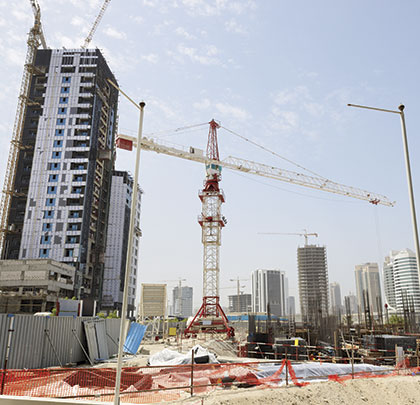The following is information taken from OSHA’s brochure, Recommended Practices for Safety & Health Programs in Construction, dated October 2016.
In today’s economy, an increasing number of workers are assigned by staffing agencies to work at specific “host” worksites under the direction and control of the host employer. Examples include unskilled laborers or skilled trade workers from a staffing agency who may be placed in either short- or long-term assignments with a general contractor or other contractor. In these situations, it is important for the staffing agency and the host employer to communicate and coordinate to provide and maintain a safe work environment for their workers. (Note: Any employer on a multi-employer worksite may be a “joint employer” with a staffing agency if temporary workers are utilized.)
In both temporary worker and multiemployer situations, safety is enhanced if employers establish mechanisms to coordinate their efforts and communicate effectively regarding their safety and health responsibilities to afford all workers equal protection against hazards. These mechanisms include measures to ensure that all workers on site (and their representatives) can participate in preventing injuries and illnesses. Failure to take these steps may undermine safety programs. For example, if the different employers have inconsistent policies for when and where to wear PPE, workers may mistakenly believe that the equipment is not needed, leading to injury. Inconsistent safety policies may also cause workers to question the credibility of safety and health programs, resulting in less meaningful employee engagement and participation.
STEPS TO ESTABLISH EFFECTIVE COMMUNICATION
The general contractor communicates with contractors, subcontractors, and staffing agencies to determine which among them will implement and maintain the various parts of the safety and health program, to ensure protection of all on-site workers before work begins. These determinations can be included in contract documents that define the relationships between the parties and confirmed during pre-construction meetings.
- The general contractor establishes and implements procedures to exchange information with contractors, subcontractors, and staffing agencies about hazards present on the jobsite and the measures that have been implemented to prevent or control such hazards.
- The general contractor gathers and disseminates information sufficient to enable each employer to assess hazards encountered by its workers and to avoid creating hazards that affect workers on the site.
- Contractors, subcontractors, and staffing agencies regularly give the general contractor any information about injuries, illnesses, hazards, or concerns reported by their workers and the results of any tracking or trend analysis they perform.
- Each contractor or subcontractor establishes and implements a procedure for providing the general contractor with information about the hazards and control measures associated with the work being done by its workers, and the procedures it will use to protect workers on the site.
- The general contractor gives contractors, subcontractors, and staffing agencies the right to conduct site visits and inspections and to access injury and illness records and other safety and health information.
- The general contractor provides contractors, subcontractors, and staffing agencies and their workers information on hazards that could occur as a result of non-routine operations or emergencies and procedures to follow in emergency situations.
- Information is communicated before on-site work starts and, as needed, if conditions change. ■
For More Information: OSHA’s dedicated web page, www.osha.gov/ SHPGuidelines, supports the implementation of its recommended safety and health practices. The site includes additional resources related to each core element of the recommended practices, including downloadable templates, worksheets, and reference materials you can use to develop your own safety and health program.
_________________________________________________________________________
Modern Contractor Solutions, February 2017
Did you enjoy this article?
Subscribe to the FREE Digital Edition of Modern Contractor Solutions magazine.



